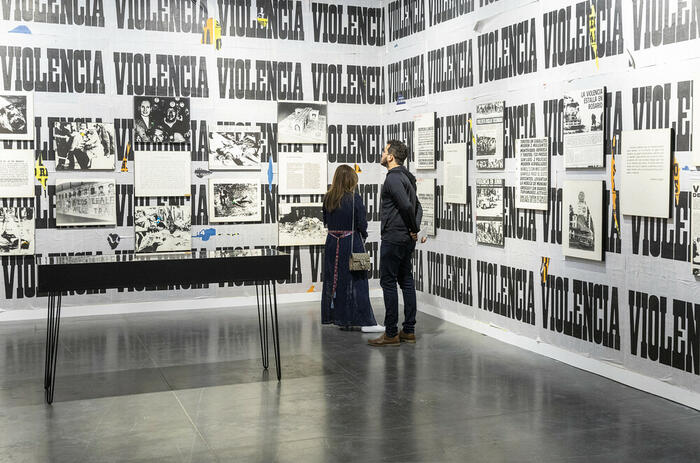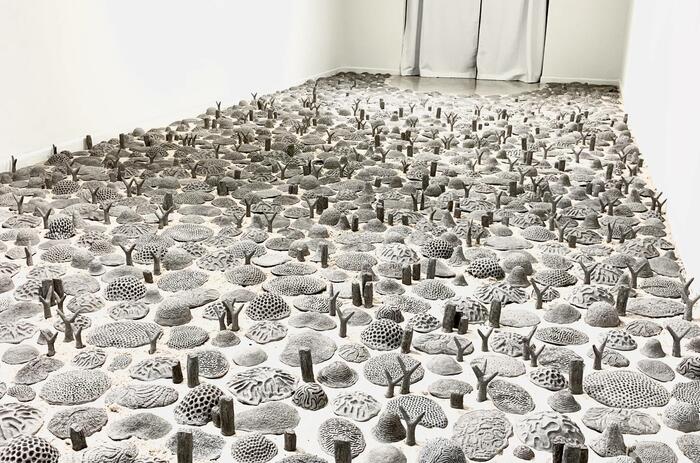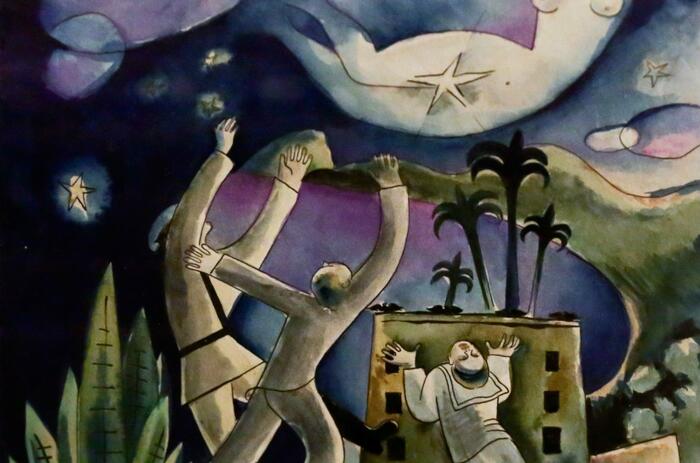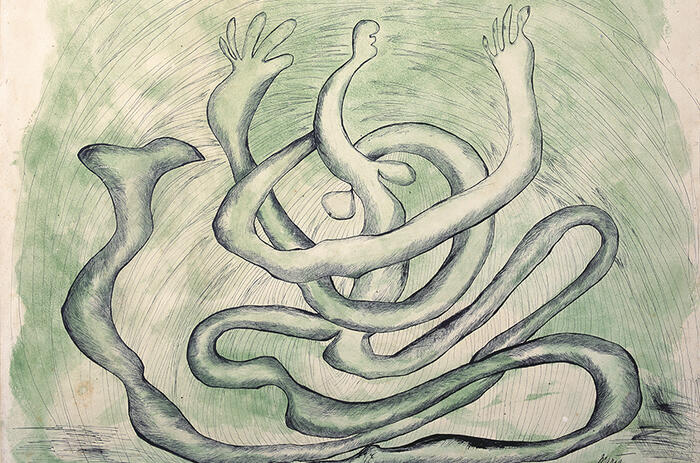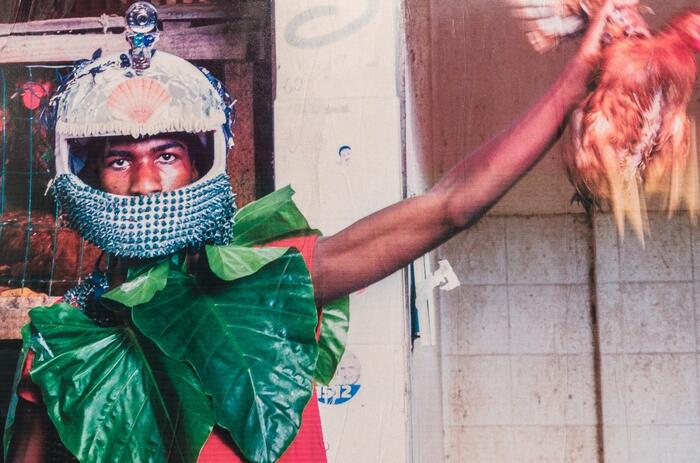'INHOTIM IS ABSOLUTELY UNIQUE,' SAYS JULIETA GONZÁLEZ
An institution that is more attentive and permeable to public debate, that has its own collection as a living witness to the changes. This could be one of the guiding axes of the work of the Venezuelan Julieta González at the head of the artistic direction of Inhotim, one of the main centers of contemporary art in Brazil and one of the most inspiring open-air museums in the world.
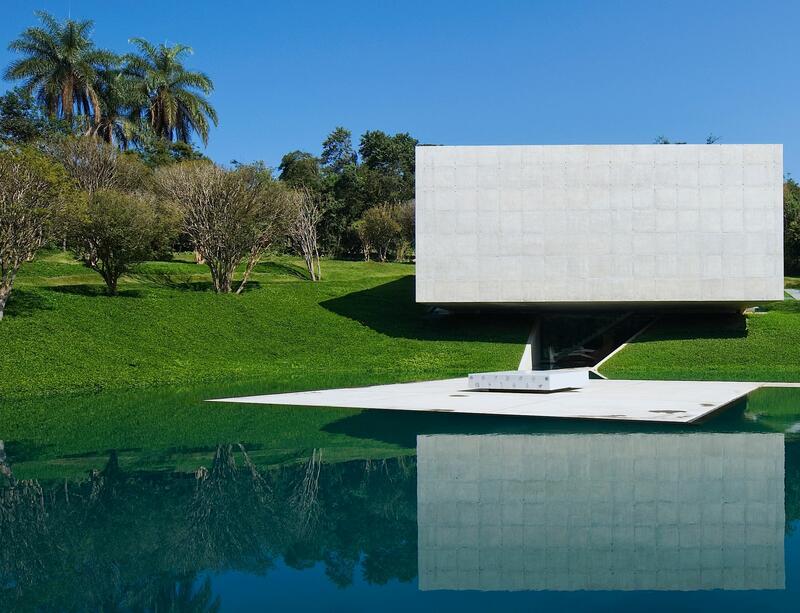
At the helm of Inhotim since the beginning of 2022, her presence attests to the changes in the museum's management, now with a new team: Lucas Pessôa, as general director; Paula Azevedo, vice president; in addition to Julieta at the head of the curatorship. In June, businessman Bernardo Paz, founder of the institute, also definitively transferred 330 works from his collection to the institution, which includes the space's 23 galleries and permanent works, in addition to the total area of 140 hectares which contains a botanical garden with more of 4,000 species.
“The conjunction of nature and art makes this an absolutely unique place, even with other similar exteriors in the world. There was no way to say no,” the critic and researcher, former Tate, Jumex, and who also worked at Masp at the beginning of Adriano Pedrosa's management at the São Paulo museum, tells Arte al Día.
-
Julieta González, Diretora Artística de Inhotim, 2021. Foto: Brendon Campos.
-
Vista externa da Galeria Adriana Varejão, Instituto Inhotim. Tacoa Arquitetos. Foto: Rossana Magri
-
Hélio Oiticica, Invenção da cor, Penetrável Magic Square #5, De Luxe, 1977, Instituto Inhotim. Foto: Brendon Campos
-
Hélio Oiticica, Invenção da cor, Penetrável Magic Square # 5, De Luxe, 1977, Instituto Inhotim. Foto: João kehl
-
Vista aérea de Olafur Eliasson, By Means of a Sudden Intuitive Realization, 1996, Instituto Inhotim. Foto: Brendon Campos
-
Cildo Meireles, Desvio para o Vermelho I, II e II (1967 – 1984), no Instituto Inhotim. Foto: Brendon Campos.
-
Valeska Soares, Folly, 2005. [vista interna]. Foto: Daniela Paoliello
-
Chris Burden, Beam drop Inhotim, 2008, Instituto Inhotim. Foto: Brendon Campos
The curator affectionately greets the participants of an Afro procession in the exhibition hall where the performance of Abdias Nascimento (1914-2011) is now brilliantly exhibited in front of the Teatro Experimental do Negro, during the opening of the exhibition, which denotes a change in route for the space located in Brumadinho, Minas Gerais. There is a current rediscovery of the numerous works by Abdias. It is the subject of four temporary exhibitions in the center's programme, with today's being the second chapter. And the Masp hosted, under the curatorship of Amanda Carneiro, a recent clipping with 61 paintings. “The collection has changed a lot in recent years. The presence of black artists and others not traditionally represented will be exhibited in integration with contemporaries who were already in the collection,” she explains. “These are things that should already be happening. I like to think that I contributed to that change.”
Beyond racial, gender, minority issues and other vectors that have shaken museums and similar spaces worldwide, Inhotim's own configuration -in a total area of almost 250 hectares protected as a private natural heritage reserve- gives it a robust ecological vocation. "And many artists realized that urgency, in a relationship that is not only one of extraction, but one of exchange," says Julieta.
-
Inimá de Paula, Retrato de Abdias Nascimento Filho, óleo sobre tela, 54 x 73 cm, Rio de Janeiro, 1967. Coleção Museu de Arte Negra - IPEAFRO
-
Abdias Nascimento, A flecha do Guerreiro Ramos_ Oxóssi, 1971, acrílica sobre tela. Coleção Museu de Arte Negra - IPEAFRO, no Segundo Ato do Museu de Arte Negra. Galeria Mata, Instituto Inhotim. Foto: Brendon Campos.
-
German Lorca, Léa Garcia em cena de “O imperador Jones”, 1953 Acervo Abdias Nascimento – IPEAFRO
-
Iberê Camargo, Estudos para o livro _ABC de Castro Alves_, de Jorge Amado. Tinta nanquim sobre papel, 22 X 30 cm. Rio de Janeiro, 196_. Coleção Museu de Arte Negra - IPEAFRO
-
Regina Vates, Figuras geométricas em azul e vermelho, 1967, Guache e grafite sobre papel Coleção Museu de Arte Negra – IPEAFRO.
The first commissioned project led by Julieta is that of the British Isaac Julien, who travels through audiovisual, poetry, photography and installation, for example. For Inhotim, the center of the artist's production is located in the figure of Langston Hughes (1902-1967), an American multi-artist and one of the exponents of the Harlem Renaissance, in the 1920s, who became an important name in racial and artistic questions in the following decades, like Julien himself. "Isaac was very important in my training, the moving image is decisive in my research," recalls the curator. In a room of generous dimensions, the British artist links works on film, reproduced poems, photographs, archives and a previous work -Looking for Langston, from 1989, today a reference- with impressive poetics -mixing the fictional and the documentary and generating lyrical approaches to black identity, daily life in cities and queer relationships, among other discussions.
-
Isaac Julien, Looking for Langston: I Dream a World, exposição em cartaz na Galeria Praça, Inhotim. Foto: Brendon Campos
-
Isaac Julien. The Last Angel of History (Looking for Langston Vintage Series), 1989/2016. Ilford classic silver gelatin fine art paper, mounted on aluminum and framed. Framed size 58.1 x 74.5 cm. 22 7/8 x 29 3/8 in; Edition of 4 plus 2 APs (#2/4). © Isaac Julien. Foto: cortesia do artista e Victoria Miro.
-
Isaac Julien, Looking for Langston: I Dream a World, exposição em cartaz na Galeria Praça, Inhotim. Foto: Brendon Campos
-
Isaac Julien. Pas de Deux No. 1 (Looking for Langston Vintage Series), 1989/2016. Ilford classic silver gelatin fine art paper, mounted on aluminum and framed. Framed size 58.1 x 74.5 cm. 22 7/8 x 29 3/8 in. Edition of 4 plus 2 APs (#2/4). © Isaac Julien. Foto: cortesia do artista e Victoria Miro.
-
Isaac Julien, After George Platt Lynes, Nudes 1942 (Looking for Langston Vintage Series), 1989/2017. Kodak Premier print, Diasec mounted on aluminum. 260 x 180 cm. 102 3/8 x 70 7/8 in. Edition of 3 plus 2 artist's proofs (#1/3). © Isaac Julien. Cortesia do artista e Victoria Miro
As part of the Acervo em Movimento (Collection in Movement) program, with works recently added to the collection, Birutas (2021), by Arjan Martins from Rio de Janeiro, helps demonstrate Inhotim's new exhibition identity. Five nautical sleeves were installed in one of the highest areas of the place, where the wind abounds, and are subject to bad weather and other natural movements. Previously made of tissue paper, a fragile material, the new version of this three-dimensional work brings connections to the previous production of Arjan, a black artist who grew up in the suburbs of Rio de Janeiro and entered the contemporary art circuit more maturely, discussing especially through painting the Afro-Atlantic diaspora, displacements and migrations. At the 34th São Paulo Biennial last year, the Complexo Atlântico (Corda) installation stood out, in which he placed an anchor on one of the floors of the building designed by Oscar Niemeyer (1907-2012).
Still in Acervo em Movimento, Lovers (2004) is presented, an immense and at the same time simple piece by Laura Belém, already exhibited at the 51st Venice Biennale, in 2005. Two rowing boats were placed in one of the museum's photogenic lakes, face to face, and with its lights oscillating between presence and absence, the living and the finite, the material and the impermanent. In this flirtation of order destined to fail, to dismantle, an open work of great poetry is forged, both simple and profound. A good sign that Inhotim, open to urgent debates, also retains visibility for more silent works, research and formats far from the spectacle.
Inhotim Institute
Rua B, 20 Fazenda Inhotim, Brumadinho - MG, 35460-000
Brazil

